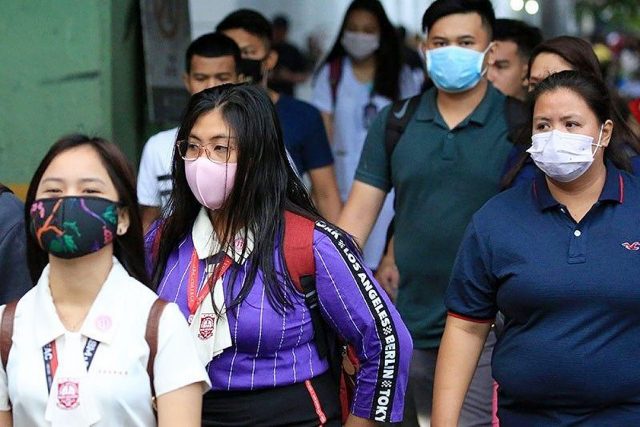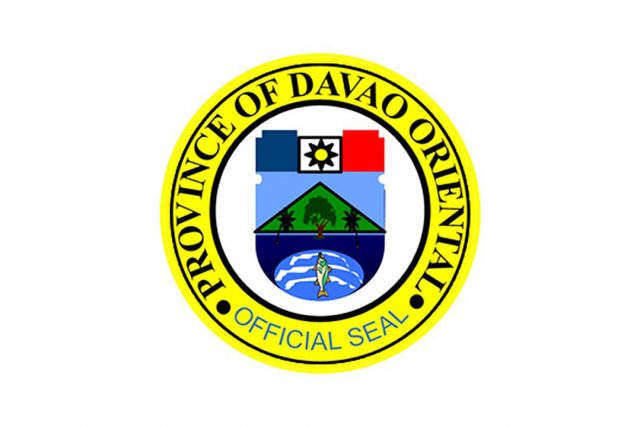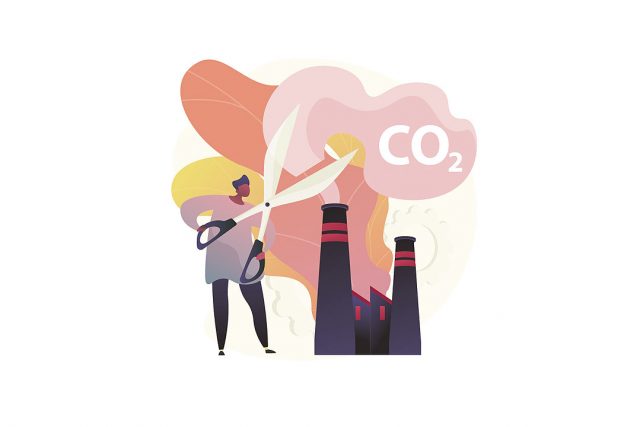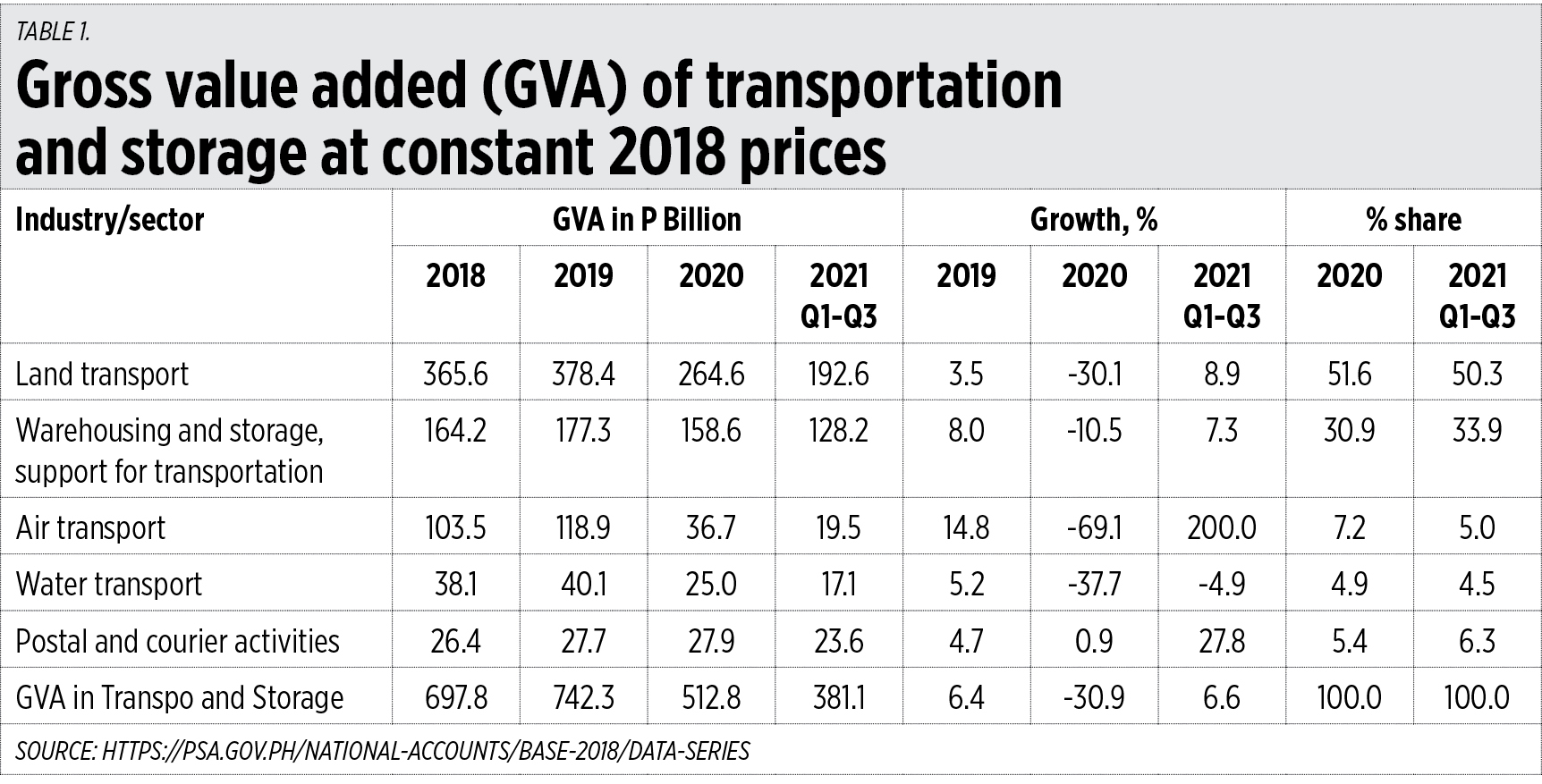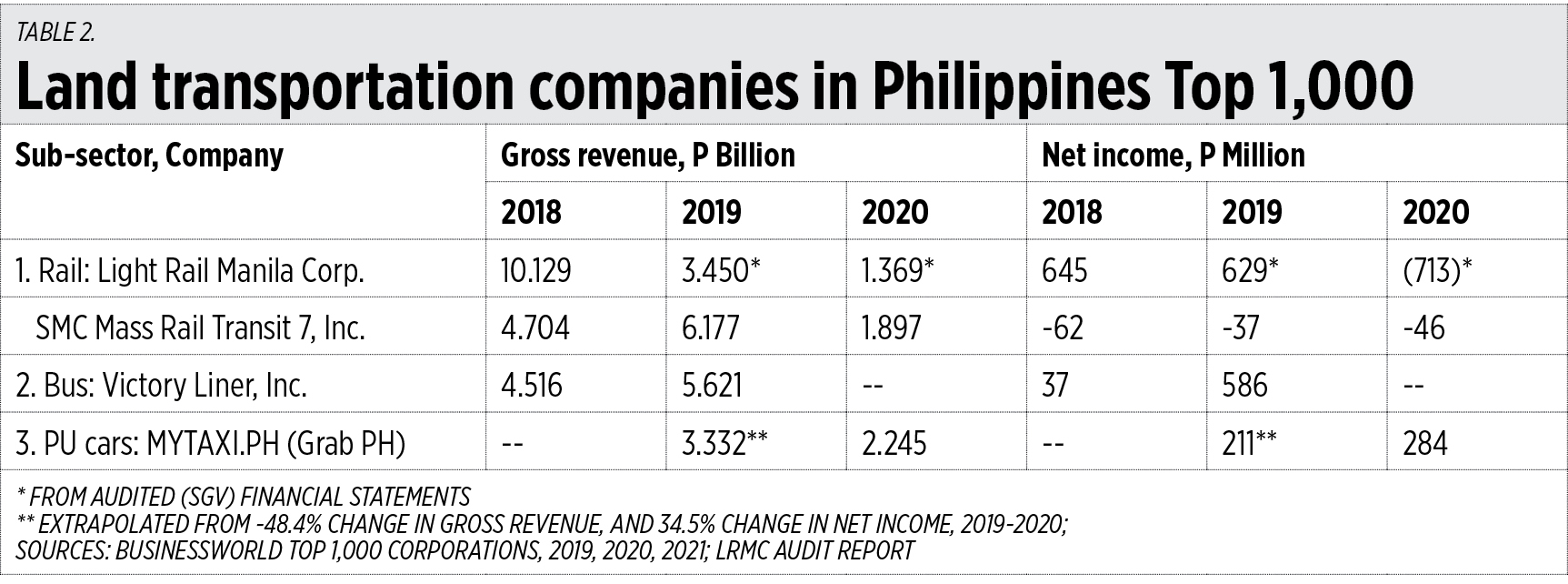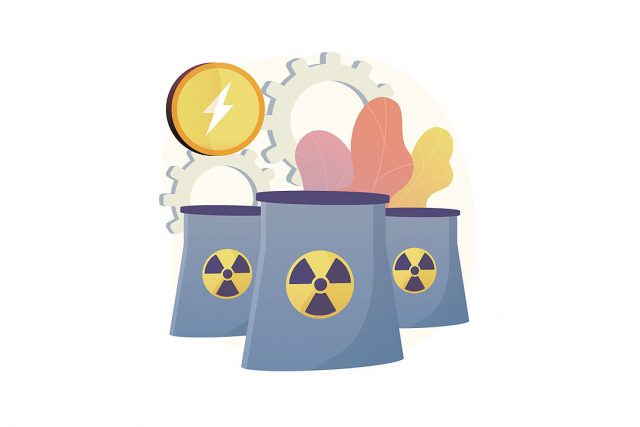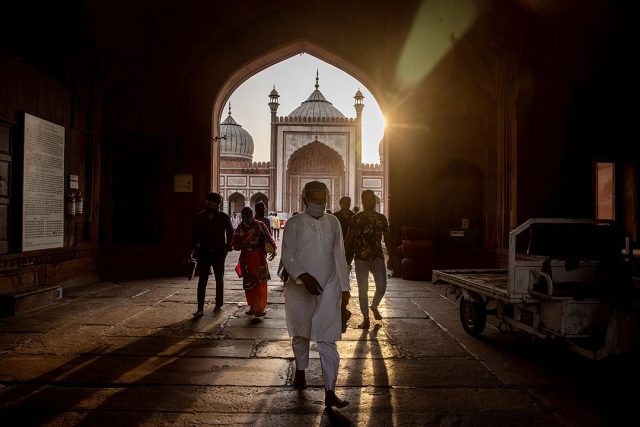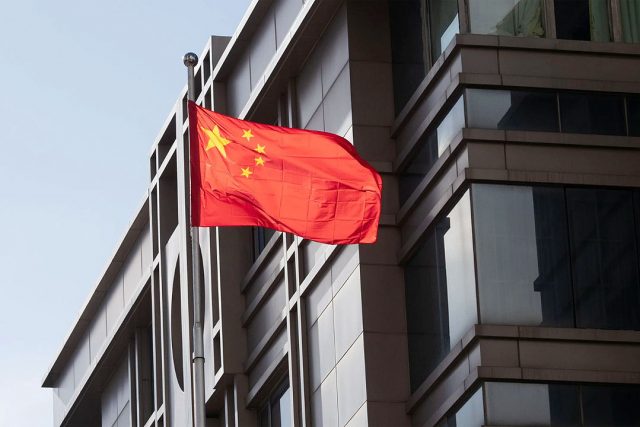Let us take a quick look at our country’s current situation. We are still facing severe and multiple crises, including a health crisis, an economic crisis, an education crisis, an environmental crisis, and a social justice crisis. Given that 2022 is a critical election year for the country, we hope that “political and constitutional crisis” is not added to this already long list.
On the national election, I must say that whatever the outcome may be, we are prepared to work with the duly elected new administration and contribute to its development program for our people.
As we enter the third year of the ongoing pandemic, nearly 3 million COVID cases have been reported, with over 52,000 deaths. To date, only 48% of our population has been fully vaccinated, falling short of the 70% goal set for 2021. The current surge in infection rates is unfortunate, and it threatens to set back our country’s recovery. Any increase in mobility restrictions can cause undue hardship once more for the business sector and the workers who could lose their jobs.
As we all know, COVID infection concerns of customers and workers alike have affected businesses adversely, and many companies have closed down and gone bankrupt. The unemployment rate in 2022 is expected to range between 7% to 9% or roughly three times the pre-pandemic 2.2% in 2019.
The digital divide is keeping the poor out of the emerging digital economy. Children from low-income families have limited access to online education, further exacerbating the education crisis.
With a poverty rate of 17.5% in 2021, there could be up to 19 million poor Filipinos among us. At the same time, millions of Filipinos are still suffering from the devastation caused by Typhoon Odette, and these typhoon victims can attest to our current environmental crisis.
What do we do now? It is time for us not only to do more but also to be more. To be better. We should not be thinking of just going back to the pre-pandemic state of affairs in 2019. In fact, why should we return to the old normal? The pandemic has proved to be an excellent mirror for humanity, and us, highlighting the social and economic inequalities and systemic weaknesses that afflict our people. What we should be striving for right now is a new normal that is genuinely sustainable, resilient, equitable, inclusive, and beneficial for all.
MAP THEME FOR 2022
Based on these observations, our 2022 MAP (Management Association of the Philippines) Board has decided to adopt the theme, “Push for change: Towards a better future for all.”
Last year we did the “Great reset: Leading for the common good.” Building on our past gains, we move forward to push for change.
Our Board will, as is customary, collaborate closely with the various MAP committees, which constitute the lifeblood of our organization. We have made some adjustments to our committee configuration to be more effective. Certain related committees have been consolidated to achieve a more coordinated approach to multifaceted challenges and avoid fragmented solutions.
As a result, we now have just 22 committees, down from 26 last year. But this does not mean a reduction in committee leaders, as we have appointed additional co-chairs and vice-chairs to committees with broader mandates.
3 MAIN THRUSTS FOR 2022
In line with our MAP Theme for 2022, we are pursuing three major thrusts:
The first thrust: policy reform for economic dynamism
We will put together an agenda of policy imperatives and push for their adoption for sustained recovery and continuing progress, whether through executive or legislative action. In addition, we will advocate for good governance and the rule of law in the operation of and policy implementation by relevant public offices.
In the wake of the pandemic, the need for a conducive enabling environment for investment, foreign and domestic, becomes even more pressing. We must address the country’s energy security, resolve foreign ownership restrictions in critical industries, and improve the ease of doing business, to name just a few imperatives.
In addition, we must unleash private sector participation in infrastructure development to benefit from private sector capital, expertise, and efficiency. More broadly, I cannot overemphasize the need to have the private sector on board as an active and dynamic participant in our nation’s quest for sustained development and growth.
During the coming election campaign period, we in MAP will organize and participate in forums featuring the presidential, vice-presidential, and senatorial candidates. These forums will serve as a platform for raising our policy and governance concerns.
By mid-2022, we will invite newly elected and appointed national officials for policy dialogues as they take their positions following the national election. If possible, we will resume our practice of having in-person breakfast conversations with policymakers. Otherwise, we’ll meet virtually.
We shall take a proactive stance on national issues that directly and substantially impact business and/or other sectors of society. Of particular interest to us are management excellence and good governance concerns. We intend to issue public statements on our own as MAP or in collaboration with other like-minded business groups. For greater influence and leverage, concerted action is sometimes, if not often, required.
We have grouped the sector committees that constitute the cluster on Policy Reform for Economic Dynamism, the first of our three thematic thrusts. These committees are: Agribusiness; Diversity and Inclusion; Ease of Doing Business; Energy; Health; ICT; Tax; Trade, Investment, and Tourism; and, Infrastructure and Urban Development. The National Issues Committee will be part of and serve as the lead committee of this cluster. Please note that the new Infrastructure and Urban Development Committee consolidates three previously separate committees: Transportation, Water Security, and Urban Development.
We anticipate that the committees will stay vigilant and monitor developments in their respective sectors while conducting studies on policy agendas they intend to pursue with their counterparts in the government.
The second thrust: human development and well-being
Our workforce has been rendered uncompetitive for decades due to a persistent and pervasive education crisis. Apart from skills training, we need an education system that will produce critically thinking and socially responsible citizens. I’m sure you agree that responsible citizenship is necessary for a well-functioning democracy.
While the issue affects all levels of education in the country, I believe MAP should focus on the higher education sector, where academe-industry collaboration has been found effective, albeit not widely practiced. Such partnerships can improve curricula, augment faculty, provide apprenticeships for students, and facilitate collaborative research and innovation.
However, we are prepared to cooperate with other organizations to address the challenges in our basic education sector.
We intend to push for programs that will generate more graduates from STEM courses (science, technology, engineering, and math) and are ready for work, particularly in data analytics.
Let me tell you about the Agri-Aqua Innovation Challenge project, which we plan to support. The project is a 10-month national competition for startups and students. Its goal is to help students turn their technological ideas into actual products and services that will benefit farmers, fisherfolk, and the rest of our population. For this project, we will join the Department of Science and Technology and the Asian Institute of Management in a government-academe-industry partnership. MAP members will serve as mentors and sponsors to the competing teams.
We are also considering collaborations with educational and other institutions to implement strategic programs with long-term national impact. We are particularly interested in programs that address critical business and social concerns, such as cybersecurity, health, and responsible social media.
One other educational issue we intend to look into pertains to the training of our seafarers. While Filipinos dominate ship crewing globally, very few become captains and senior merchant marine officers, high-paying positions that can benefit their families and the country more.
The third thrust: shared prosperity and sustainability
In November 2020, MAP led a group of 26 business organizations in signing a Covenant for Shared Prosperity. This Covenant, in my view, has the potential to catalyze inclusive and sustainable development. We will assess the Covenant’s progress and consider renewing the signatories’ commitments. We will also make an effort to bring these commitments to a broader range of companies, including MSMEs, in addition to large corporations.
We will look into how Environmental, Social, and Governance metrics (ESG for short) can support the Covenant’s implementation. In this regard, we are discussing possible collaboration on an ESG Reporting project with the De La Salle University’s Animo Labs.
A new ESG Committee will lead our programs and projects under this third thrust. The Committee results from amalgamating three previously separate committees: Corporate Governance, Climate Crisis, and Social Justice.
The three thematic thrusts I have just discussed respond directly to the major concerns that our members expressed through an indicative survey conducted in November last year.
CONCLUSION
We have all witnessed how the ongoing pandemic has accelerated the implementation of technology solutions, like digital transformation. Changes that formerly took years and decades to materialize now happen in a matter of weeks. Indeed, every major crisis presents an opportunity. The larger and more disruptive a crisis, the more opportunities it offers, as New York University Professor of Marketing Scott Galloway highlights in his 2020 book Post Corona.
It appears that the timing could not be better for us to pursue policy reforms to improve the lives and well-being of Filipinos. It is also time to push for changing mindsets towards a more productive workforce and a more robust business commitment to environmental sustainability, social justice, and good governance.
I believe that each of us can contribute to the desired changes. The work may not be easy, but I assure you that end result will be well worth it.
This article is part of the Inaugural Speech of Alfredo “Fred” E. Pascual as the president of the Management Association of the Philippines or MAP for 2022.
Alfredo “Fred” E. Pascual is lead independent director of SM Investments Corp. and former president of the University of the Philippines.
map@map.org.ph
fred.pascual@map.org.ph



